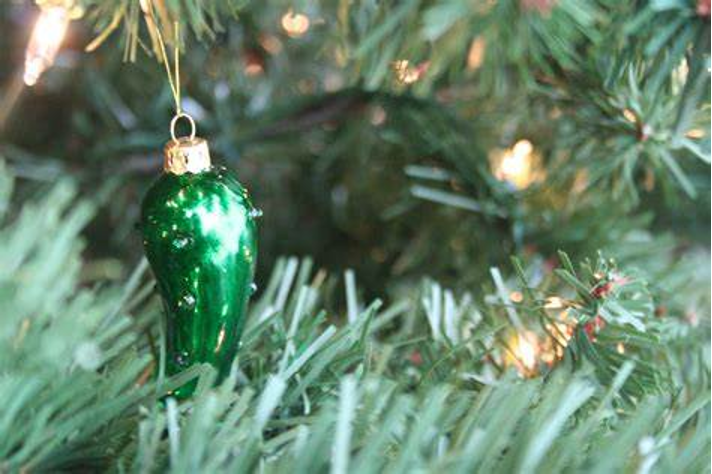Conspiracy theories about the Christmas pickle
The tradition of the Christmas pickle involves hiding pickle shaped ornaments in the branches of the Christmas tree.
December 19, 2022
During Christmas kindergarten show-and-tell I remember coming into class explaining the sacred tradition of the pickle. At the time all I knew was that on Christmas morning everyone rushed downstairs to open gifts, but all I did was look for the pickle. When I found it, my sisters always said I cheated, claiming I purposely made them forget about it. My mom said fair was fair and gave me my special gift for the year.
I, like many people, believed that the Christmas pickle was a German myth; however, that is exactly what it is: a myth. There is no evidence that points to the pickle being German. In fact, 91% of Germans have never even heard of this Christmas pickle.
If not German, then what? There have been multiple theories about the mysterious origin of the Christmas pickle, but none of them have been confirmed. The first theory is the most realistic; a starving soldier during the first world war who was given a pickle and later hung a pickle on his Christmas tree every year. The second, much less likely, theory has Saint Nick freeing two boys from a barrel of pickles that an evil innkeeper stuck them in, allowing them to return to Christmas dinner in time. The boys then hung a pickle from the barrel on their tree.
The third theory is most likely where the myth of German origin came from. German merchants used to sell ornaments of vegetables and fruits, including pickles. When they learned of the American story of the Christmas pickle, they started selling the ornaments overseas.
Whether it appeared during the first world war, because of Saint Nick, or because of German merchants, it is clear that the pickle has managed to spread tradition through millions of homes. Without the Christmas pickle and its silly origins, Christmas would not be the same for many families.








Jennifer Herring • Dec 21, 2022 at 11:07 pm
Excellent article! I was surprised to learn that the tradition did not originate in Germany, but it is a fun tradition nonetheless!